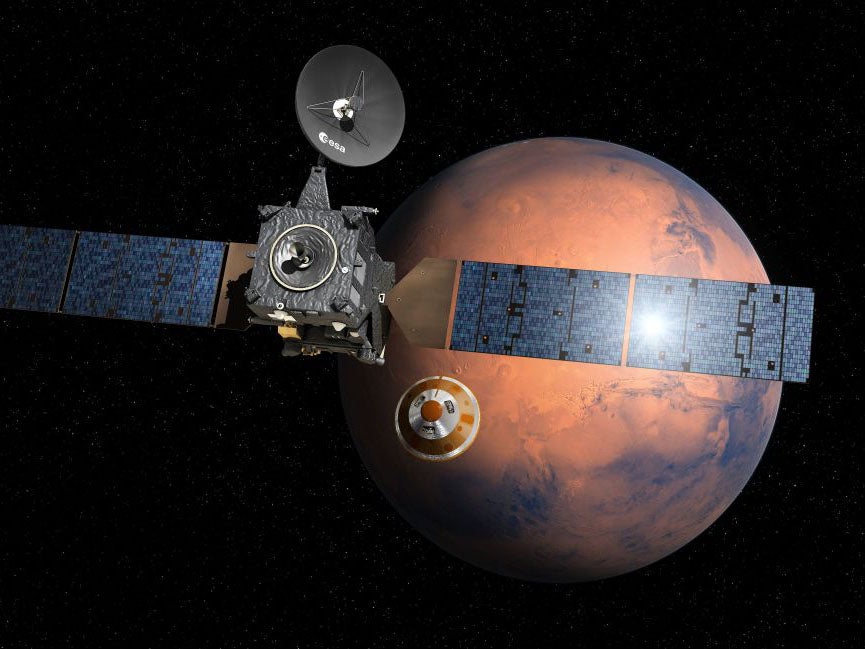ExoMars 2016: Spacecraft designed to search for life on Mars set for launch
The first of two European spacecraft probing for life on the red planet will leave Earth from Kazakhstan on Monday

Your support helps us to tell the story
From reproductive rights to climate change to Big Tech, The Independent is on the ground when the story is developing. Whether it's investigating the financials of Elon Musk's pro-Trump PAC or producing our latest documentary, 'The A Word', which shines a light on the American women fighting for reproductive rights, we know how important it is to parse out the facts from the messaging.
At such a critical moment in US history, we need reporters on the ground. Your donation allows us to keep sending journalists to speak to both sides of the story.
The Independent is trusted by Americans across the entire political spectrum. And unlike many other quality news outlets, we choose not to lock Americans out of our reporting and analysis with paywalls. We believe quality journalism should be available to everyone, paid for by those who can afford it.
Your support makes all the difference.The first of two European spacecraft designed to search for vital signs of life on Mars is scheduled to be launched on Monday from the Russian cosmodrome in Kazakhstan.
Two ExoMars missions are to be launched in the next two years in the hope of finding evidence of living organisms beneath the radiation-scorched surface of Mars.
The first, ExoMars 2016, will sniff out methane gas in the Martian atmosphere and determine whether it comes from volcanic activity or as the metabolic by-product of life – most of the methane on Earth comes from living microbes.
In 2018, the second ExoMars mission will send a British-built rover to Mars, armed with sensitive instruments for burrowing down beneath the surface to try to identify any chemical signatures of life.
Russian Proton rockets will launch the first part of the €1.2bn (£924m) mission, which will be the most targeted attempt at finding direct evidence of life on Mars.
Peter Grindrod, a planetary scientist at Birkbeck, University of London, said: “This is a series of missions that’s trying to address one of the fundamental questions in science: is there life anywhere else besides the Earth? Finding that life exists elsewhere in the solar system would be a huge discovery, so the evidence has to be strong. As they say, extraordinary claims require extraordinary evidence.”
Methane is quickly broken down by sunlight and has to be continually regenerated from some source to persist in a planet’s atmosphere.
On Earth, the primary source is life. Billions of microbes, including many that thrive in the guts of animals such as cattle and termites, belch out the gas. But methane can also be released by volcanic activity and geological chemistry. ExoMars should be able to determine the source of any methane on Mars.
Join our commenting forum
Join thought-provoking conversations, follow other Independent readers and see their replies
Comments